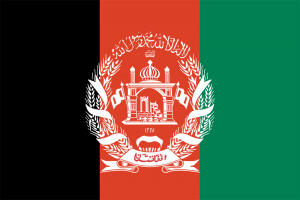Difference between revisions of "Language/Central-pashto/Grammar/Possessive-Pronouns"
m (Quick edit) |
m (Quick edit) |
||
| Line 1: | Line 1: | ||
<span pgnav> | |||
{| class="wikitable pg_template_nav" | |||
|[[Language/Central-pashto/Vocabulary/Relationships|◀️ Relationships — Previous Lesson]] | |||
|[[Language/Central-pashto/Grammar/Possessive-Adjectives|Next Lesson — Possessive Adjectives ▶️]] | |||
|} | |||
</span> | |||
{{Central-pashto-Page-Top}} | {{Central-pashto-Page-Top}} | ||
| Line 121: | Line 128: | ||
{{Central-pashto-Page-Bottom}} | {{Central-pashto-Page-Bottom}} | ||
<span links></span> | <span links></span> | ||
<span pgnav> | |||
{| class="wikitable pg_template_nav" | |||
|[[Language/Central-pashto/Vocabulary/Relationships|◀️ Relationships — Previous Lesson]] | |||
|[[Language/Central-pashto/Grammar/Possessive-Adjectives|Next Lesson — Possessive Adjectives ▶️]] | |||
|} | |||
</span> | |||
Revision as of 22:17, 2 April 2023
| ◀️ Relationships — Previous Lesson | Next Lesson — Possessive Adjectives ▶️ |
Overview
In this lesson, you will learn about possessive pronouns in Central Pashto, their forms, and their usage. You will also practice using them in sentences and understand their role in sentence structure. By the end of this lesson, you should have a clear understanding of the concept of possessive pronouns and be able to use them confidently in your communication.
Possessive Pronouns in Central Pashto
In Central Pashto, possessive pronouns are used to show ownership or possession of a noun or pronoun. They agree in gender and number with the noun they modify, and their form changes according to their position in the sentence.
The following table shows the possessive pronouns in Central Pashto:
| Pronoun | Masculine Singular | Feminine Singular | Masculine Plural | Feminine Plural |
|---|---|---|---|---|
| My | Zama | Zama | Zama | Zama |
| Your (Singular) | Taso | Tasay | Tasay | Tasa |
| His/Her/Its | Wray | Waray | Waray | Wrasha |
| Our | Zama | Zama | Zama | Zama |
| Your (Plural) | Taso | Tasay | Tasay | Taso |
| Their | Wrara | Waray | Waray | Wrara |
As you can see, the possessive pronouns in Central Pashto have the same forms for both the singular and plural first person (i.e., "my" and "our"). They also have the same forms in the singular second person (i.e., "your") but differ in the plural second person (i.e., "your all"). The masculine and feminine forms are used to agree with the gender of the noun being possessed.
Using Possessive Pronouns
Possessive pronouns in Central Pashto are used to show ownership, just like in English. They are used to modify a noun or pronoun to show who it belongs to. Here are some examples:
- زما کتاب
- Zama kitab
- My book
- تاسو کتاب
- Taso kitab
- Your book (singular)
- ورې کتاب
- Wray kitab
- His/Her/Its book
- زما کتابونه
- Zama kitabuna
- Our books
- تاسو کتابونه
- Taso kitabuna
- Your books (plural)
- وړه کتابونه
- Wrara kitabuna
- Their books
As shown in the examples above, possessive pronouns usually come before the noun they modify. However, sometimes they can come after the noun in some constructions, as you will see in the following example:
- دا د کتاب دی
- Da da kitab dai
- This is my book
In this example, the possessive pronoun دا (da) comes after the noun کتاب (kitab) and before the copula دی (dai), which means "is".
Practice Exercises
Now, it's time to practice using possessive pronouns in Central Pashto. Translate the following sentences into Central Pashto:
- This is my house.
- His bike is new.
- Our mother is kind.
- Their books are old.
- Your (singular) pen is red.
Check your answers:
- دا د زما کور دې.
- ورې د افغان پرانې دی.
- زمګوري مور د پامیر وي.
- وړه کتابونه د پیرمرغونې دی.
- تاسو د قلم سور دې.
Conclusion
In Central Pashto, possessive pronouns are an essential part of communication when expressing ownership or possession. They are used to modify a noun or pronoun to show who it belongs to, and their forms change according to gender and number. By mastering the use of possessive pronouns, you will be able to communicate more effectively in Central Pashto. In the next lesson, you will learn about possessive adjectives in Central Pashto.
Upon wrapping up this lesson, take a look at these related pages: Questions & Past Continuous.
Other Lessons
- Gender
- Plurals
- Adjectives
- Subject Pronouns
- Past Simple
- Present Continuous
- Subject Object Verb
- Possessive Adjectives
- 0 to A1 Course
| ◀️ Relationships — Previous Lesson | Next Lesson — Possessive Adjectives ▶️ |
